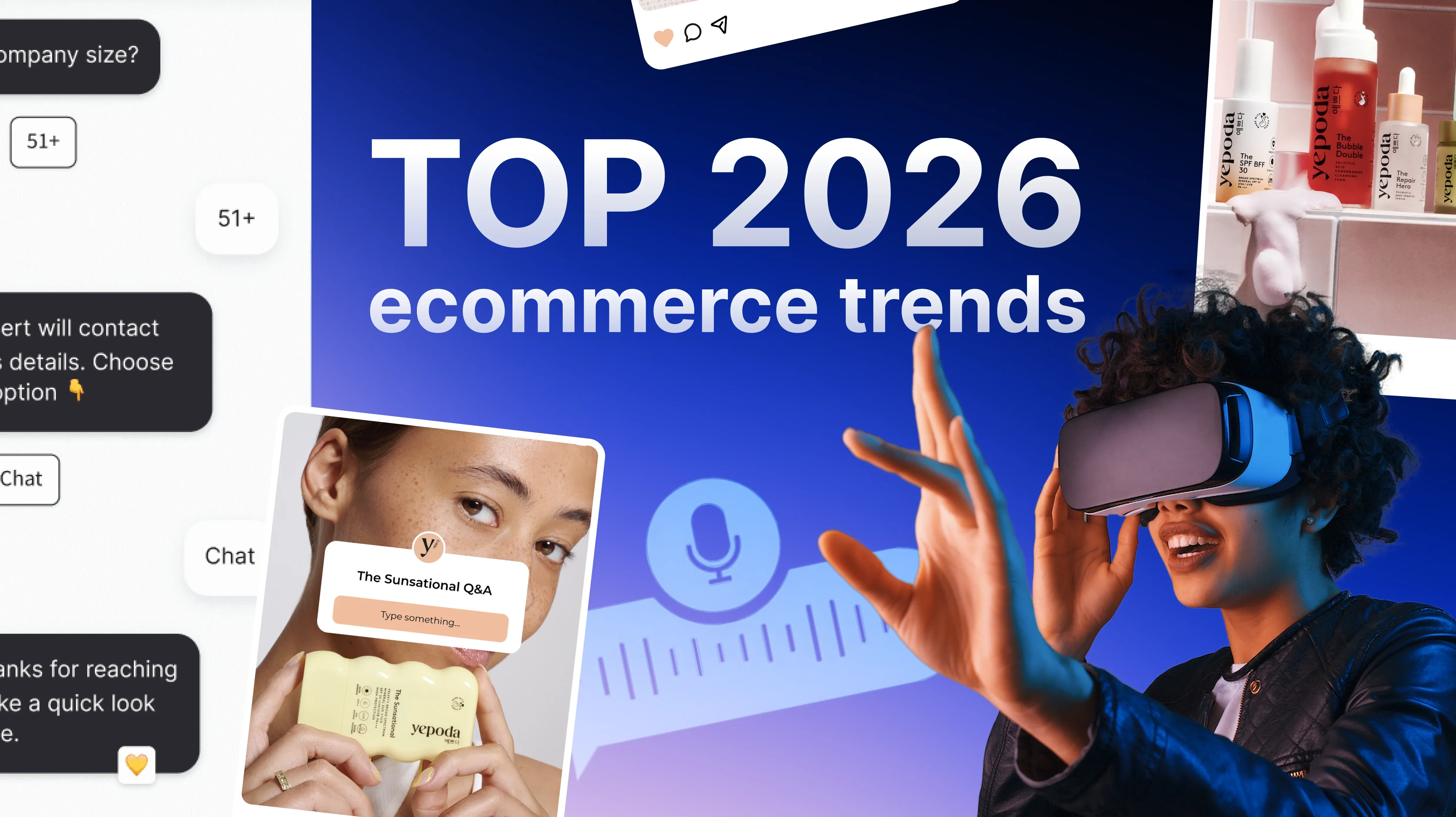
While machine learning and deep learning are transforming nearly every area, the SaaS industry appeared to be the one that was the most affected by this phenomenon. Traditional software no longer meets the demand for smarter features, automation, and predictions. By enhancing SaaS with AI insights, businesses get a leading edge and may stay competitive and quickly adapt to changes.
But don’t just take our word for it. Here are some key statistics on AI in SaaS:
The global AI software revenue is expected to reach $118.6 billion by 2025, up from $9.5 billion in 2018.
Nearly every new SaaS product will have integrated AI service by 2025.
Let’s explore why AI in SaaS is evolving, what benefits it brings, and what challenges it presents along the way.
7 Ways companies can utilize AI
Artificial intelligence has become a transformative force in the SaaS industry, driving innovation and improving efficiency across various business functions. Here are some of the key ways AI is being used in the SaaS realm.
Customer Relationship Management
Features like lead scoring and predictive analytics help businesses easily spot promising leads and improve their sales efforts. Moreover, AI chatbots provide support 24/7, helping to answer the most common questions quickly and efficiently. Sixty-seven percent of customers prefer solving their problems without speaking to live agents. This builds stronger connections with customers and encourages business growth.
Product development
Using AI in product development offers valuable insights from user data analysis. They help generate innovative ideas, streamline tasks such as prototyping and testing, and even assist with coding and debugging – better overall outcomes are on the surface. By spotting problems quickly, AI helps improve product quality and reliability, resulting in better products. Check how generative AI integration services can help you grow your business.
Project management
Providing project management with AI tools makes the process much easier, saving time for important decision-making. AI can automate task assignments by analyzing workloads, deadlines, and team members' skills. AI-powered tools can also automate time tracking and generate detailed productivity reports. Resource optimization becomes easier with AI, as it can allocate resources based on real-time availability and project needs. Now, project managers have more time to concentrate on key projects, thus improving efficiency and productivity.
Employee training
The use of AI technology in employee training helps improve the workplace with quick, real-time training tips that are right in employees' workflows. AI-powered platforms can adapt training content to individual learning styles, identify knowledge gaps, and deliver targeted resources to improve skill development efficiently. This type of training is much more effective and engaging than traditional methods like eLearning or offsite training days.
Marketing
AI-powered SaaS helps automate marketing campaigns across various channels and provides detailed analytics for better audience targeting. Generative AI has been widely adopted in content creation. A survey by Authority Hacker found that 85% of marketers use AI to write content, including articles, social media posts, ad copy, landing pages, and in-app microcopy.
Besides ChatGPT, there are many AI writing tools available. Also, the challenge is that professional localization can be too expensive. Luckily, AI can help. With NLP models, you can automatically translate your content into many languages.
Cybersecurity
Cybersecurity solutions are enhanced by AI defenses that detect and respond to threats more quickly and accurately in the early stages. You’ve likely heard that features like AI-enhanced data loss prevention and user behavior analysis help organizations prevent security risks, keeping important business information safe.
Design
The creative-as-a-service (CaaS) model helps businesses use AI for better growth and great design, helping SaaS companies stand out.
With an innovative AI subscription model, businesses improve ad performance and allow busy creative teams to produce ten times more work with AI's speed.
Businesses can quickly increase their creative work for ads, which helps them move faster, test more, and make changes when needed. Remember, AI doesn’t replace designers; it’s a tool that supports the great work they do.
AI tools already powering user experience and insights
AI tools have been around for some time, and you likely have your favorites by now. Here are a few we find especially useful for SaaS teams:
Userpilot analyzes user behavior, gathers feedback, and creates personalized onboarding for better product adoption. It uses AI for writing assistance and localization, simplifying creation and refining support content. Soon, they will also provide insights from user behavior and feedback data.
Hotjar is a product experience analytics tool known for its heatmaps and session recordings. Its AI generates customer surveys based on your goals and analyzes responses, bringing actionable reports and recommendations.
Synthesia lets companies successfully create videos without recording. Everything is simple: just input a script and choose an avatar. Synthesia generates realistic videos for product demos, tutorials, and more.
Mixpanel provides advanced analytics to understand user behavior throughout their customer journeys. With the AI tool Spark, users get complete reports, breaking down data silos for easier decision-making.
Zendesk is a customer service solution with AI chatbots that uses past customer interactions. This way, AI helps prioritize requests, provides recommendations, and even creates resource articles from simple outlines.
The ChurnZero platform uses AI to create content like emails and guides, streamlining customer onboarding and engagement. It also generates customer reports in one click, summarizing data like health and engagement trends.
10 SaaS companies using AI
AI and SaaS are both strong technologies and coming together, they can achieve even greater results. Here are some examples of effective SaaS AI tools that are already used in popular SaaS platforms:
Shopify Magic offers a set of effective AI tools like Availability Text generation, Sidekick, Media generation, App review summaries, Predicted values for amount spent per customer, Customer segments, Data handling and privacy. With great features for personalized support, marketing, customer service, and managing back-office tasks, they make setting up and handling an ecommerce business engaging.
HubSpot can automatically turn business cards into contacts, eliminate duplicates, and fix data errors. It also organizes data when you import contacts, record calls, transcribe conversations, and sort email information. Using SEO tips and popular content suggestions, users can find relevant topics to improve engagement. In sales, there are easy tools to identify promising leads with predictive scores and the best times to send emails. Also, you can automatically fill in important contact details and recognize names in live chats for better communication.
Zoom offers AI Companion at no additional cost, only for paid Zoom user accounts. This AI tool delivers powerful, real-time digital assistant capabilities for improved customer experience and efficiency. Features like meeting summaries, message writing, and real-time support are now available and help users simplify task management and improve teamwork. All of them operate in Meetings, Team Chat, and Whiteboard modes.
Dropbox’s AI search provides valuable features such as summarization and natural language queries, helping users easily find relevant content. It can also be used in different applications like Microsoft 365, Google Workspace, Salesforce, Notion, and, of course, Dropbox itself. Additionally, a great new video editing tool is now available, using AI to edit videos by removing sections based on the text in a transcript.
Zendesk not only helps sort customer inquiries quickly but also provides helpful suggestions and can automate replies and internal notes. Content creation for the Help Center is easier with Generative AI, and voice interactions are enhanced by Generative AI for Voice.
DocuSign enhances the experience with both traditional AI and generative AI. While the first one provides specific information, the generative AI creates new content based on its learning. With helpful insights, it fuels key business and contract processes, improves contract discoverability, and generates better business intelligence from agreements.
Oracle AI services include unique features like prebuilt tools of OCI Language for text analysis, OCI Speech for speech recognition, and OCI Vision for image analysis. Oracle tools for training custom AI services are really useful for businesses, and by using their data, they can get tailored solutions.
Slack offers a variety of AI features that can schedule meetings and send reminders, search smart responses to your questions, channel recaps that highlight key points from channels, and thread summaries that help catch up on long conversations with just one click. Moreover, you get full control of your data as they build on Slack’s secure platform.
Salesforce offers an arsenal of useful tools like email writing, call summarizing, and insights for conversation guidance. By using their tools for real-time predictions, businesses get significant help in closing deals and automating tasks, which results in strengthening relationships. Such a tool like Extend Agent Builder easily turns workflows into actions, letting users manage them through a simple interface.
Microsoft provides plenty of tools with AI assistants. We will point out several of them. For example, Cortana schedules meetings, sends emails, and provides reminders. Copilot offers effective tools for searching specific information, generating text, and creating images based on text prompts you write. But that’s not all. Thanks to Microsoft sensors, cyber incidents can be prevented in advance, and the protection of the systems can be improved. Can you imagine that they collect over 8 trillion signals daily?
Now, let’s take a quick look at the future and explore how AI in SaaS might evolve.
Looking to the future of SaaS artificial intelligence
For SaaS companies, the uses for AI are almost endless. From providing faster, more personalized user experiences to improving product development and automating tasks, AI is changing every part of the SaaS world. Ultimately, AI has been used in SaaS apps for a long time in things like chatbots, forecasting, personalization in ecommerce, and employee reminders.
Many famous companies like Microsoft, IBM, and Polymer have been using AI for years, but many others are just starting to catch up. A big reason for this is the release of ChatGPT in 2022, which showed everyone the amazing potential of AI. This pushed SaaS companies to adjust their products to stay competitive. Although the benefits of integrating AI into SaaS products are well-known, the industry is still in the early stages of adoption, with many companies unsure of the best ways to implement AI.
Benefits of AI in SaaS
Here are some great examples of how SaaS businesses can benefit from AI:
- Personalization: Machine learning SaaS helps companies understand what customers like and gives them tailored recommendations to boost sales.
- Automation: AI can handle repetitive tasks, like entering data and generating reports, improving project management and overall efficiency.
- Predictive analytics: By finding patterns and predicting future trends, customers now benefit from extra sales opportunities.
- Customer service: AI improves customer service by reducing support tickets and highlighting areas that need attention. As a result, support teams can focus on more complicated issues.
- Enhanced cybersecurity: By early spotting and addressing potential threats, AI quickly detects unusual user behavior and provides security risks.
- Scalability: By automating tasks and reducing the need for manual work, today, even the most complex applications or processes are easily handled.
- Cost savings: AI boosts efficiency and, as a result, reduces cost, which is especially important for small and medium-sized businesses that may not have the resources for a large team.
As AI keeps developing, we expect to benefit even more from this technology in the world of SaaS artificial intelligence.
Challenges and considerations of AI in SaaS
Ultimately, AI brings huge benefits to SaaS, but there are also some challenges and ethical issues that require consideration. We will highlight a few of them here:
Bias
Bias is a major problem for the use of AI in SaaS products. AI models learn from the data they are trained on. If this data is old, incomplete, or biased, the system will get wrong results and poor security. Also, biased AI can keep unfair practices that will result in social problems, which can hurt people’s trust in the technology.
Here are some key ways to reduce bias in AI:
Make sure the training data includes a variety of demographics to minimize bias.
Conduct regular checks on AI models to find and fix any biases in their outputs.
Use tools designed to detect bias in AI algorithms and evaluate their fairness.
Keep AI models current with new data to avoid outdated information affecting results.
Be transparent about how AI makes decisions to build trust with users and stakeholders.
Involve a variety of stakeholders during development to gain insights that can help spot potential biases.
Privacy and security concerns
The road to adopting AI isn’t smooth. AI needs a lot of data to work, which influences privacy concerns. Many generative AI tools analyze user questions in different ways, including text, images, and audio. Using SaaS AI tools with public information usually has low risk, but in the case of personal information or secret code, serious leaks may cause much trouble. This is the pain point for areas like healthcare, where personal information must be protected.
This risk is higher with tools like ChatGPT. These AI models improve their accuracy and usefulness by learning from the data they process. When sensitive information is entered, it becomes part of the AI’s system. This makes it hard to keep SaaS applications and users safe.
To reduce privacy and security risks, we recommend these steps:
Only collect personal data that is necessary for the AI to function.
Inform users about what data they should avoid entering, especially sensitive information.
Use strong security measures, like encryption and secure access, to protect sensitive data.
Perform regular security audits to find and fix any weaknesses.
Clearly explain how data is collected and used to build trust with users.
Prepare a plan to quickly address any data breaches or leaks.
Create guidelines that prioritize user privacy and security while following relevant laws.
Intricacies
Many SaaS companies find it hard to get real value from their AI projects. One report by the McKinsey Global Institute showed that only a small number of AI initiatives achieve meaningful results.
Joining the AI trend just to seem modern can lead to disappointing results and wasted resources. Thus, be sure you take into account the following points:
Set specific, measurable goals for AI projects to ensure they align with business objectives.
Select use cases that genuinely benefit from AI and can deliver tangible results.
Engage relevant teams and stakeholders early in the process to ensure buy-in and smooth integration.
Start with small pilot projects to test AI solutions before scaling them up.
Regularly assess the performance of AI initiatives and make adjustments as needed to improve outcomes.
Provide training for employees to help them understand and effectively use AI tools.
Shadow AI
The rise of generative AI tools has brought up a new concern called shadow AI. This is similar to shadow IT, where employees use generative AI tools without permission from the cybersecurity team, which increases security risks.
First, it’s hard to control what data goes into generative AI applications, making it difficult to prevent data leaks. SaaS providers need to be careful because large language models (LLMs) might accidentally reveal sensitive information during use.
Also, the race to create their own LLMs increases the risk of exposing important training data. This could happen due to attacks from hackers or mistakes in security settings.
However, it’s important to be realistic — AI is not a magic solution for every problem in the SaaS. But, following these steps, SaaS companies can build AI products that are both useful and trustworthy:
Create clear rules about using AI tools so employees know what’s allowed.
Inform each employee about the risks of unauthorized AI tools and train them on approved ones.
Use tracking solutions to keep an eye on AI tool usage and spot any unauthorized applications.
Implement rules to manage what data can go into AI tools to protect sensitive information.
Invest in strong security measures like encryption, access controls, and regular audits.
Promote open discussions between cybersecurity teams and employees about AI needs and concerns.
Regularly ensure that the AI tools in use meet security and compliance standards.
Pilot missteps
A major challenge with AI-driven SaaS products is that companies often make exaggerated claims about what their AI can do. Recent studies show that 80% of AI projects fail to achieve their goals, showing a big gap between what is promised in marketing and what really happens in practice.
AI is often seen as a quick fix for all problems, but it’s actually a complex technology with limits. SaaS companies sometimes hype their AI features too much, which can create unrealistic expectations, which may result in a loss of trust among users.
Thus, consider the recommendations:
Focus on practical examples of where AI has worked well instead of making big promises.
Test AI features carefully before launching to make sure they work as expected and meet user needs.
Explain how AI works and what data it uses to build trust.
Ask users for feedback on AI features to find ways to improve them.
Provide training and resources so users know how to use AI features effectively.
Regularly check how AI tools are performing and make changes based on user experiences.
Wrapping up
New trends are changing our reality and creating new opportunities in every part of our lives. It’s important to keep up with these changes to make the most of what new technology brings.
Even if you don’t need or can’t embed AI into your product right now, you can still use its power to boost your SaaS growth. Just look for AI SaaS solutions that can help optimize your internal processes and analyze data, like the ones we mentioned above.
If you're looking to develop or enhance your SaaS solutions with AI, we offer expert SaaS development services that help to unlock new possibilities. Let's work together to bring AI-driven innovation into your business, making it smarter, faster, and more secure. Reach out to us to get started!








































Was this helpful?
0
No comments yet